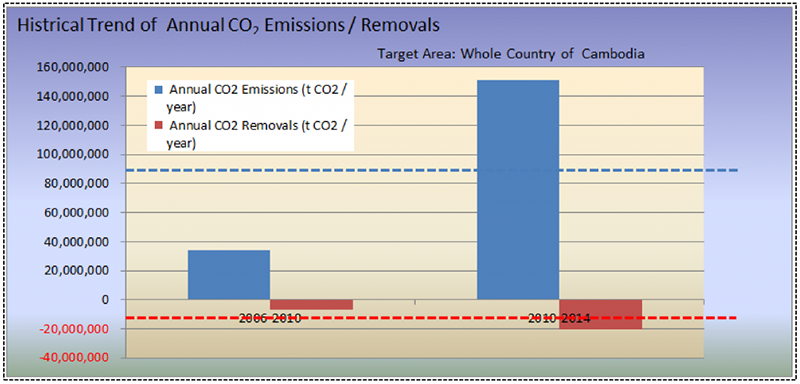Cambodia’s initial Forest Reference Level (FRL) has gone through technical assessment (TA) in the United Nation Framework Convention on Climate Change (UNFCCC) and the document has been made available for public in UNFCCC REDD+ Web Platform.
Cambodia, as a REDD+ country, has submitted its FRL to UNFCCC on a volunteer basis in the context of results-based payments for reducing emissions from deforestation and forest degradation and the role of conservation, sustainable management of forests and enhancement of forest carbon stocks in developing countries (REDD+). The FRL is a benchmark to assess a country’s progress in reducing emissions from deforestation and forest degradation. It is based on historical emission levels, and takes into account the national circumstances of the country.
In 2014, Cambodia REDD+ Taskforce created a Technical Group responsible for Measuring, Report and Verification of REDD+ (MRV) in charge to build the FRL and oversee the work of National Forest Monitoring System (NFMS). This MRV Team is composed by key technical staff from the Ministry of Environment, Forestry Administration and renowned government institutions working in forest, climate change, land management, and academic institutions to provide technical inputs for the development of FRL. The report was submitted to UNFCCC in early 2017 and went through the UNFCCC’s technical assessment process and received minor revision prior to its official publication in the international online platform. The technical assessment report can be found here.

Cambodia’s Initial FRL is based on the national historical average of net emissions from deforestation between 2006-2014, which amounted to about 79 million of tons of CO2 per year, cover the whole territory and focus on activities of deforestation. This means that the FRL will assess only REDD+ activities that address the causes of deforestation, changes from one forest type to another, and afforestation. Following the stepwise approach for REDD+, Cambodia will improve its FRL when more data and better methodologies are available, and where appropriate, additional pools will be incorporated.
The next step now is the development of Cambodia’s Technical Annex of the 1st Biennial Update Report in which the results achieved reducing deforestation will be submitted to the UNFCCC. This will be the last step on a very stringent process under the UNFCCC to ensure that REDD+ results are fully measured, reported and verified.
